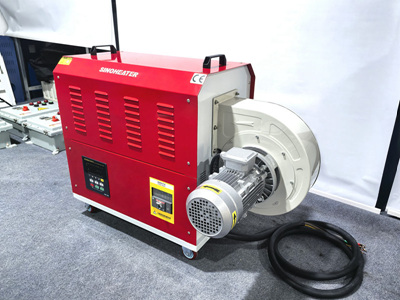Enhancing DIY Soap Release with Hot Air Blowers: Temperature Control and Technique Optimization
DIY soap making often involves intricate molds that require precise temperature management for successful demolding. Hot air blowers offer a controlled heating method to soften soap edges gently, reducing breakage and preserving detailed designs. This guide explores how to optimize airflow, temperature, and timing for various soap recipes and mold materials.
Understanding Soap Composition and Thermal Response
The effectiveness of hot air heating depends on the soap’s base ingredients. Cold-process soaps made with high percentages of hard oils like coconut or palm require more sustained heat (40–45°C) to soften compared to melt-and-pour soaps, which respond faster at 35–40°C. Soaps containing additives like honey or clay may need adjusted temperatures to prevent uneven melting.
For glycerin-based transparent soaps, use lower heat settings (30–35°C) to avoid surface bubbling. When working with multi-layered soaps, apply heat incrementally—starting with 5-second bursts—to prevent interlayer separation. Always test temperature responsiveness on a small sample before treating entire batches.
Mold Material Considerations and Heat Distribution
Silicone Molds
Flexible silicone molds benefit from targeted heating around edges and corners where soap tends to stick. Direct the hot air blower at a 45-degree angle, maintaining a 10–15 cm distance. Move the nozzle in circular motions for 10–15 seconds per section, focusing on intricate patterns. The flexibility of silicone allows gentle twisting after heating to release stubborn areas.
Plastic and Acrylic Molds
Rigid plastic molds require careful temperature control to prevent warping. Limit direct heat exposure to 8–10 seconds per area, using medium airflow settings. After heating, insert a thin silicone spatula along the mold’s edge to create an air gap. For acrylic molds with deep cavities, heat the bottom surface first to encourage uniform shrinkage.
Wooden and 3D-Printed Molds
Natural wood molds absorb moisture and may crack under excessive heat. Apply brief 3–5 second bursts of warm air (30–35°C) to the exterior walls. 3D-printed PLA molds have low heat tolerance; use the lowest setting (25–30°C) and avoid prolonged exposure. Cooling the mold slightly in the refrigerator before heating can create thermal contrast for easier release.
Technique Refinement for Optimal Results
Layered Heating Approach
Start by warming the mold’s perimeter where soap contracts most during curing. After 20–30 seconds of focused heating, gently press the mold’s bottom to check for flexibility. If resistance remains, apply additional heat in 5-second increments rather than continuous exposure. This prevents over-softening the soap’s center.
Humidity and Ventilation Balance
High humidity environments slow soap drying, requiring slightly longer heating times. In dry climates, reduce heat duration to prevent rapid dehydration and cracking. Position the hot air blower to create gentle airflow across the mold rather than concentrated blasts. Using a room humidifier (40–50% RH) during curing can minimize the need for aggressive heating later.
Post-Heating Release Methods
After heating, immediately invert the mold onto a soft surface like a towel. Tap the base lightly with a rubber mallet to dislodge the soap. For persistent sticking, insert a dental floss loop between the soap and mold, moving it side-to-side while applying slight upward pressure. Avoid using metal tools that could scratch molds or damage soap surfaces.
Safety and Equipment Maintenance
Electrical Precautions
Never operate hot air blowers near water sources or damp workstations. Use GFCI-protected outlets and keep cords away from soap-making liquids. Store the device in a dry location when not in use to prevent internal condensation.
Nozzle and Airflow Management
Clean the blower’s nozzle regularly to remove soap residue that could alter airflow patterns. Attach a diffuser attachment to distribute heat more evenly across large molds. For concentrated heating, remove any grilles that might disperse airflow.
Operator Protection
Wear heat-resistant gloves when handling freshly heated molds. Use safety goggles to protect eyes from airborne soap particles. Keep long hair tied back and avoid loose clothing that could contact the hot air stream.
By mastering temperature gradients, mold-specific techniques, and safety protocols, crafters can achieve flawless soap release using hot air blowers. This method preserves intricate designs while reducing waste from broken or damaged bars.




